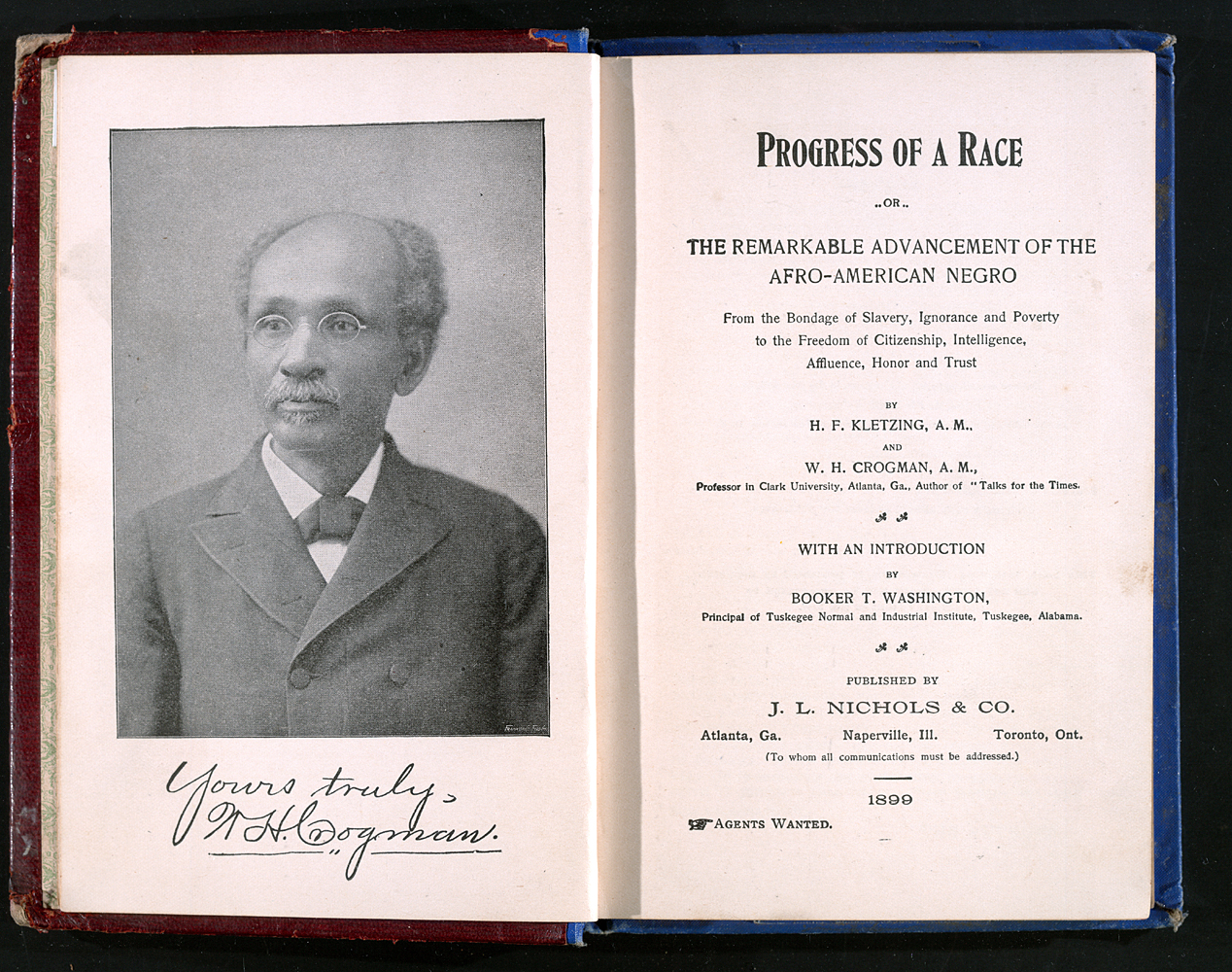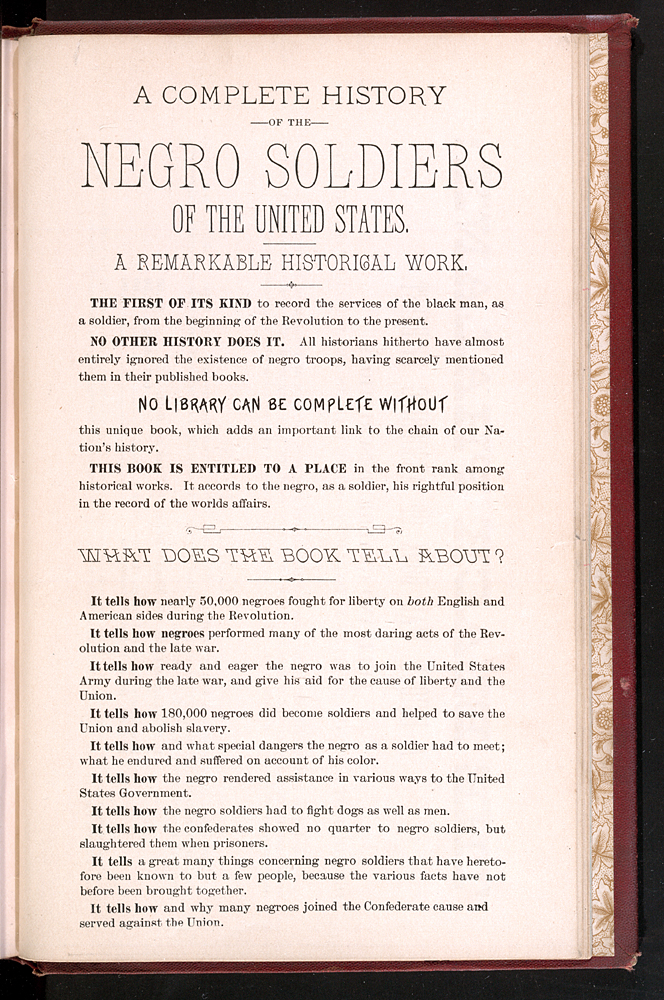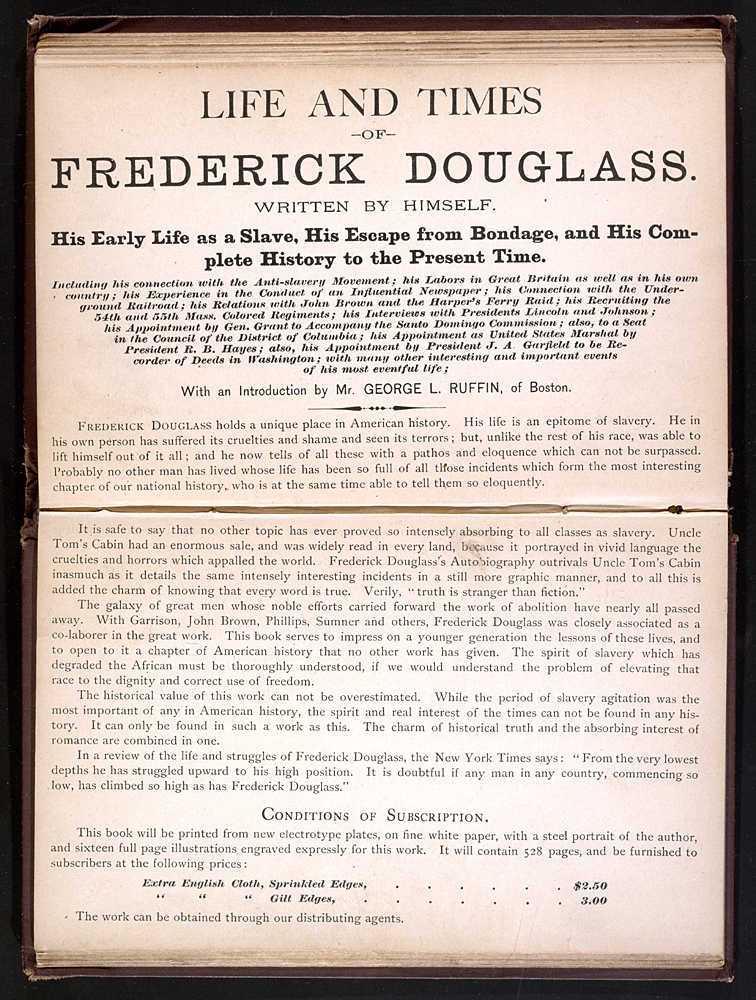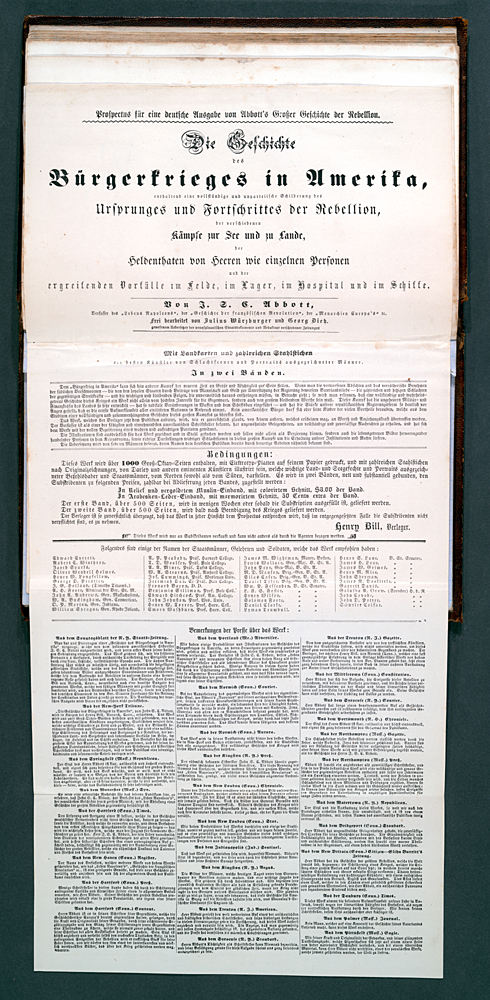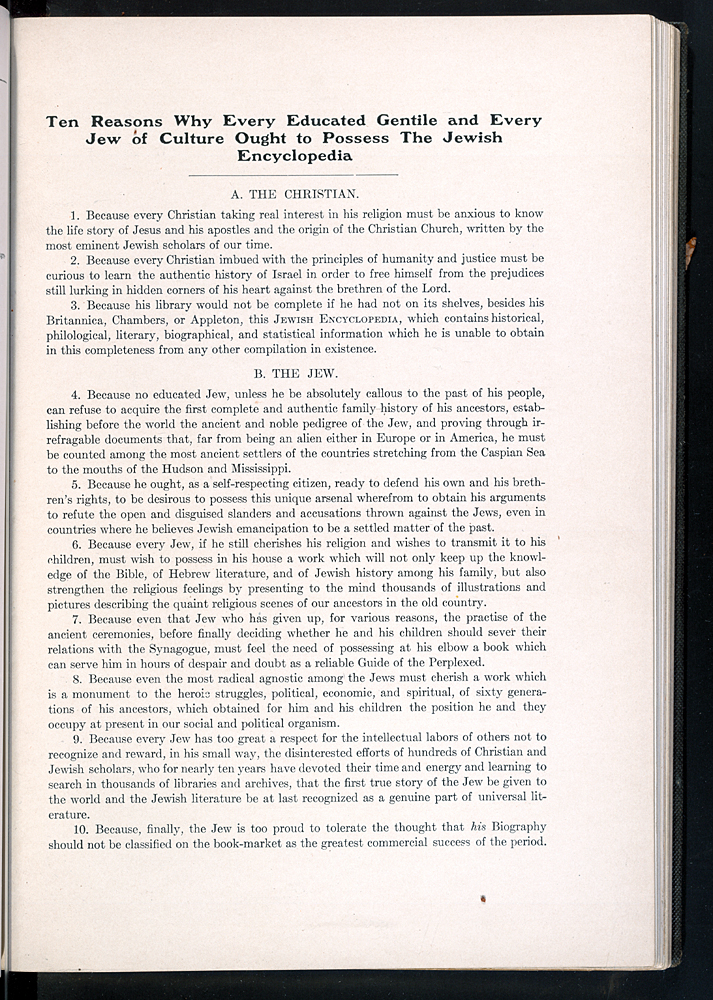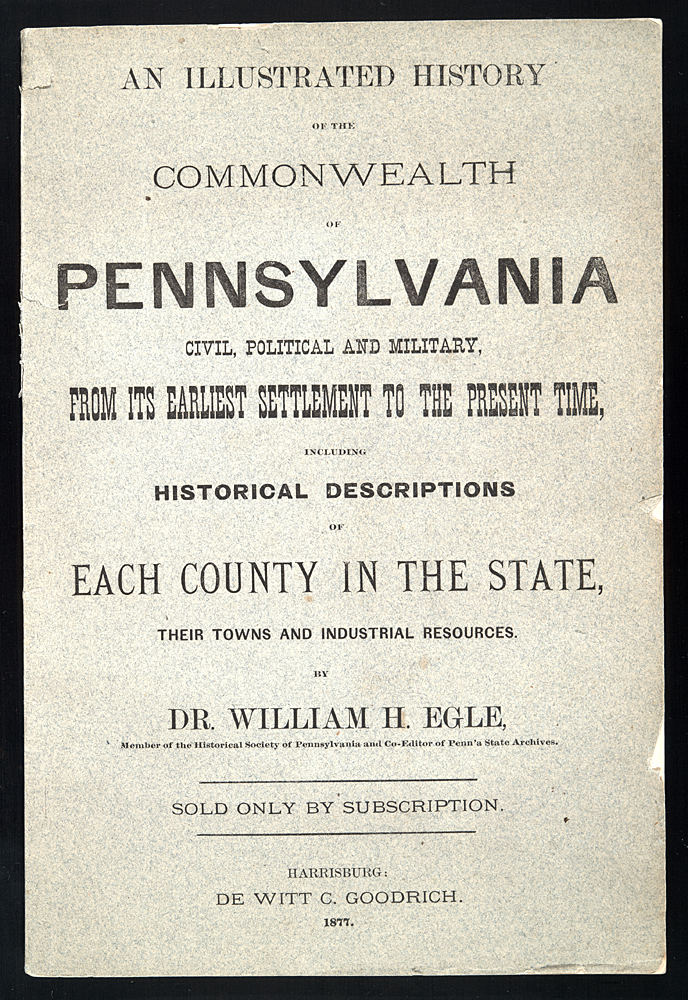Fig. 1: This important and influential work was regularly reissued in revised and enlarged editions through the 1920s. Attributed to Crogman and different collaborators, it was also published under the title The Colored American.
Fig. 2: The Civil War spawned an enormous number of books on every aspect of the war. The Black Phalanx chronicles the contributions of African Americans to both the Revolutionary and Civil Wars. It would have been of interest to and found an enormous following among the many African American veterans of the Civil War. While the title page gives the publisher as Winter & Company, the copyright belongs to the American Publishing Company of Hartford, Connecticut, publishers of Mark Twain.
Fig. 3: This enlarged version of Douglass's 1855 autobiography, My Bondage and My Freedom--originally published in 1847 as Narrative of the Life of Frederick Douglass, an American Slave--was one of a number of autobiographies of prominent African Americans to be published as subscription books in the years after the Civil War. Such books appealed to changed attitudes about and new interest in the lives and works of those who played an important role in the struggle for the emancipation of slaves in the United States. The prospectus for Douglass's Life and Times compares the work to Stowe's enormously popular Uncle Tom's Cabin, arguing for the even greater appeal of its more realistic portrayal of slavery (an "intensely absorbing" topic). Such works found an audience both in the African American community and beyond. This subscription book contains the names of sixty-six subscribers from Ohio.
Fig. 4: This is the earliest history of the Civil War in the Zinman Collection and maybe the earliest such history published for subscription sales. It appeared not only in English but also in German. The prospectus for the German translation, which appears in the canvassing book for the English edition, is seen here. Many immigrants in the United States at this time had German as their only language. Subscription publishers regarded them as but another audience for their products.
Fig. 5: During the later nineteenth century, many Eastern European Jews made their way to this country. This extensive Encyclopedia appears aimed primarily at recent immigrants and their families, offering them a printed testament to their heritage. Apparently secure about the book's primary audience, the publisher appeals for subscribers first to Christians and only then to Jews.
Fig. 6: Maps, atlases, and state and county histories were popular subscription works from the 1850s to the1870s, by which time publishers felt they had exhausted their audience. The systematic mapping of localities began around 1850 with the invention of an odometer which could be wheeled across the countryside to determine distances accurately. Ultimately it served the more important role of exciting interest among locals about a work in progress and became a prelude to selling subscriptions. Maps were succeeded by atlases--maps cut up and bound for ease of use. County and state histories often included images of specific farms and businesses as an inducement to sales. This particular example is paperbound, most likely to save money, and includes examples of the spines printed on the inside of the paper cover to show binding types. The back cover contains a list of "25 Reasons Why The History Of Pennsylvania Should Go Into Every Home In The State."
Which exhibit?
Page: Featured item
Short name for this entry
African Americans, R
Order on exhibit page
2
Turn off the details link on the exhibit page
On
Exhibit sub-tab
